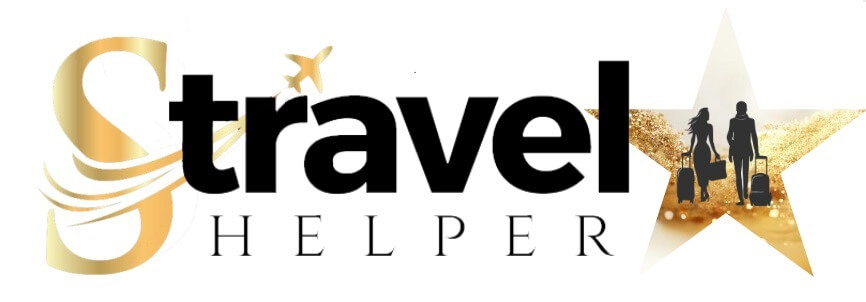

Find Anything
In Turkey.
Featured categories
Discover Turkey
Check out what's new
Most popular places






Find everything
Turkey Travel Guide
Turkey, which spans two continents, is a country where history and modernity combine smoothly, where landscapes change radically from coastal plains to harsh mountains, and where lively towns coexist with historic ruins that tell stories of bygone civilizations. This nation, officially known as the Republic of Türkiye, is unique in that the majority of its land is located in Anatolia, West Asia, with a smaller section in East Thrace, Southeast Europe. Turkey, surrounded by the Black Sea to the north, the Aegean to the west, and the Mediterranean to the south, shares borders with Greece, Bulgaria, Georgia, Armenia, Azerbaijan, Iran, Iraq, and Syria, making it a veritable crossroads of culture.
Turkey, with a population of more than 85 million, is a country with a diverse ethnic and cultural makeup. The majority are ethnic Turks, with the Kurds constituting the largest minority. Turkey is officially a secular state, but its population is largely Muslim, which has shaped much of its cultural and historical landscape. While Ankara serves as the country’s capital, Istanbul—an exciting metropolis that spans Europe and Asia—is its largest city and economic powerhouse.
Turkey’s human history dates back to the Late Paleolithic period, with some of the world’s oldest known human sites, such as Göbekli Tepe, dotting the terrain. Throughout antiquity, Anatolia was home to a variety of civilizations, including the Hattians, Hittites, Greeks, and Romans. Alexander the Great’s conquests established Hellenistic civilization, which flourished until the Byzantine era. The entrance of the Seljuk Turks in the 11th century initiated the Turkification of Anatolia, which culminated in the formation of the Ottoman Empire in 1299.
For centuries, the Ottomans governed most of Europe, Asia, and Africa, with Constantinople (modern-day Istanbul) at the center. Suleiman the Magnificent led the empire to its pinnacle, when it became a global power. However, by the nineteenth century, the empire had declined, and following its defeat in World War I, Mustafa Kemal Atatürk led the Turkish War of Independence, which resulted in the founding of the Republic of Turkey in 1923. His extensive reforms paved the way for a modern, secular republic.
Turkey’s diversified geography provides significant contrasts between locations. From the sun-drenched beaches of the Mediterranean to the snow-capped peaks of Eastern Anatolia, each region of the country has its own distinct natural beauty. The coastal lowlands of the Aegean and Mediterranean are bordered with picturesque coves and historic ruins, while the Central Anatolian plateau is distinguished by huge steppes and the strange vistas of Cappadocia. The Black Sea region, which is lush and mountainous, provides a significantly diverse landscape, complete with foggy forests and tea plantations.
The country’s climate is equally diverse, ranging from the Mediterranean environment near its shores to harsher continental climates in the interior, where winters can be harsh. Turkey has three biodiversity hotspots and is prone to earthquakes, which have affected both the physical and cultural landscapes over millennia.
Turkey, a growing economic power, is one of the world’s largest economies, with strong industries in car manufacture, textiles, electronics, and construction. It is a leading global manufacturer of steel and textiles, with a thriving technological sector. Turkish Airlines, one of the world’s largest airlines, has helped position Turkey as a major player in international travel and trade.
Despite economic issues such as inflation and income disparities, Turkey’s economic resiliency is nevertheless evident. The country is a member of several key international organizations, including NATO, the G20, and the Organization of Turkic States, demonstrating its geopolitical importance.
Tourism is a vital driver of Turkey’s economy, accounting for a sizable portion of its GDP. The country is one of the world’s most popular tourist destinations, thanks to its rich cultural past, beautiful coastlines, and bustling cities. Istanbul, a city where East meets West, continues to attract millions of visitors each year, while Antalya’s gorgeous beaches and luxury resorts have eclipsed Paris and New York in international tourist arrivals.
Turkey has 21 UNESCO World Heritage Sites and other natural beauties. Visitors can discover the ancient remains of Ephesus, the ethereal white travertine terraces of Pamukkale, and the magical landscapes of Cappadocia, where hot air balloons glide over fairy chimneys at daybreak. The turquoise seas of Ölüdeniz, the majestic cliffs of Mount Nemrut, and the haunting relics of Ani, the medieval Armenian capital, contribute to the country’s varied appeal.
Turkey’s regions each offer a distinct experience:
- Aegean Turkey: A blend of Greek and Roman ruins set against olive groves and the azure sea.
- Black Sea Turkey: A haven for nature lovers, with thick forests and opportunities for trekking and rafting.
- Central Anatolia: A landscape dominated by steppes, Hittite ruins, and the otherworldly rock formations of Cappadocia.
- Eastern Anatolia: A rugged, mountainous region with strong Armenian and Kurdish influences.
- Marmara Region: Turkey’s most urbanized area, home to Byzantine and Ottoman monuments.
- Mediterranean Turkey: A coastline fringed with pine forests and crystal-clear waters.
- Southeastern Anatolia: A land of ancient cities, bustling bazaars, and the world’s oldest megalithic site, Göbekli Tepe.
Among Turkey’s must-visit cities are:
- Ankara: The nation’s capital and political center.
- Istanbul: The vibrant heart of Turkey, rich in history and culture.
- Antalya: A gateway to the Turkish Riviera and a top beach destination.
- Bodrum: A glamorous coastal town with ancient ruins and lively nightlife.
- Izmir: A bustling port city with a Mediterranean charm.
- Konya: The spiritual center of Sufism and home to Rumi’s tomb.
- Trabzon: A gateway to the lush Black Sea region and the stunning Sumela Monastery.
Turkey provides an experience unlike any other, whether you’re interested in its profound historical roots, natural beauty, or vibrant cities. From enjoying tea in a bustling bazaar to sailing along the turquoise shoreline, discovering ancient ruins, and climbing in distant mountain settings, each traveler discovers their own piece of enchantment in this unique country. Traveling across Turkey is more than simply a trip; it is an immersion into a country where the past and present coexist in enthralling harmony.
Çamlıca Mosque
The Grand Çamlıca Mosque, also known as Büyük Çamlıca Camii, is located on Çamlıca Hill in Istanbul’s Üsküdar district and…
Deyrulzafaran Monastery
Deyrüzzaferan Monastery, a significant spiritual and historical landmark, is located approximately three kilometers east of Mardin, Turkey. Founded in the…
Eminönü Pier
Eminönü Pier, located in the heart of Istanbul, is one of the city’s most famous landmarks. Serving as a vital…
Hamsilos Bay
Located within the borders of Sinop province, Hamsilos Bay is a remarkable sea inlet extending 300-400 meters inland from the…
Olympos Ancient City
Situated inside the beautiful embrace of the Olympos Beydağları National Park, the ancient city of Olympos (Ancient Greek: Ὄλυμπoς, Ólympos;…
















